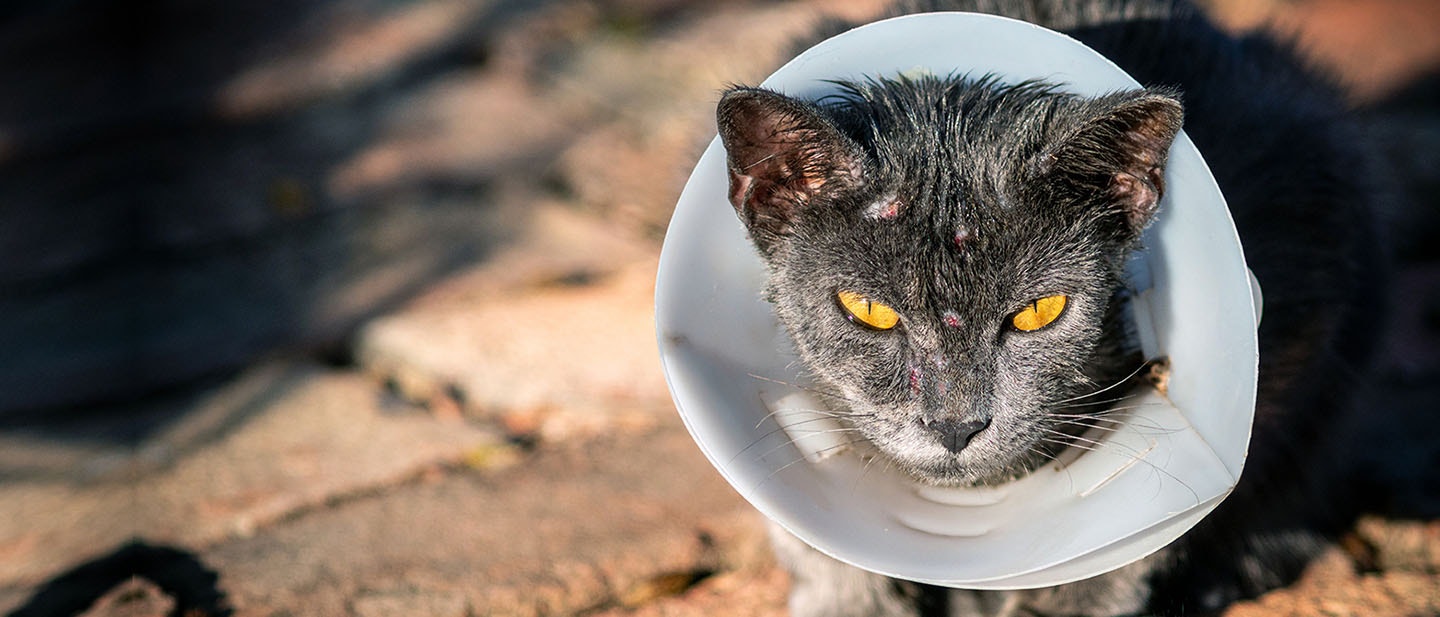
Cat Fungal Infection: Skin Disease, Causes, and Treatment
Running your fingers through your cat’s fur may keep anxiety at bay, but it can also be a source of concern if your fur baby is suffering from any skin fungal infection. Cat fungal diseases, unfortunately, are not an uncommon occurrence. Moreover, these pesky infections can lead to numerous issues ranging from skin infections to respiratory diseases. So, as a pet parent, it is good to stay ahead and look out for signs of a fungal skin infection in cats.
How to spot fungal infection in cats?
Some of the common signs that your cat may have a fungal infection include a poor appetite, skin lesions, cysts, swelling under the bridge of the nose, lethargy, circling, lung infections, blindness, and a high fever. Your cat with a fungal infection could also be particularly inactive; it could be an indication that it needs to be taken to a vet.

What are the different types of fungal infection in cats?
Fungi in the environment can negatively impact your cat. These infections attack specific body parts of your cat, such as the nose, lungs, skin, or even the nasal passages. What’s worse is that these infections can spread all over the cat’s body. Listed below are a few types of cat fungal diseases that can affect your feline friend:
- Aspergillosis
- Blastomycosis
- Candidiasis
- Cryptococcosis
- Histoplasmosis
- Mycetoma
- Phaeohyphomycosis
- Rhinosporidiosis
- Sporotrichosis
What are the causes of fungal infection in cats?
A few factors can cause fungal infections in your furry friend. In fact, cat fungus diseases can be contracted through skin (organisms entering through your pet’s cuts and scrapes), ingestion, and inhalation. Cats can also get infected with such diseases by encountering other infected animals and/or their feces. Outdoor cats are particularly susceptible due to their exposure to soil and bird droppings.
Treatment for skin fungal infection in cats?
Where there is a predicament, there is also a solution. So, do not worry if your cat has been infected; there are many treatment options available. You can resort to oral antifungal medication. This treatment takes several months but your cat will benefit from it. If any affected tissue in your pet has turned into granuloma, you may have to take them to a vet to have it surgically removed. There are no home remedies for cat fungus diseases, so avoid trying to treat them at home.
How do vets diagnose fungal infections in cats?
Vets can diagnose cat fungus diseases by examining your furry friend’s medical history. They also have your cat undergo a thorough physical examination to detect any infections in their early stages. Upon determining the type of fungus that has caused the infection, the vet can choose the best treatment plan for your pet. The treatment plan could include a complete blood count, chemical blood profile, urinalysis to detect internal fungal infections, and a tissue sample, which is taken for analysis.
How to manage fungal skin infections in cats?
If you cat is diagnosed with a fungal infection, the first and foremost thing to do is following the veterinary’s advice. The recovery period may be longer than a few months; hence, it is imperative that you medicate your cat consistently as per the vet’s instructions. The more consistent you are, the faster your cat will recover. You must also take your pet to the vet for re-examination so that it gets the best treatment. Stay alert should a potential relapse occur, as it is a common occurrence.
Now that you know the causes and symptoms of cat fungus diseases, identifying them won’t be challenging. These infections can cause a lot of discomfort to your fur baby, so make sure that you consult a vet as soon as possible and start the treatment.
